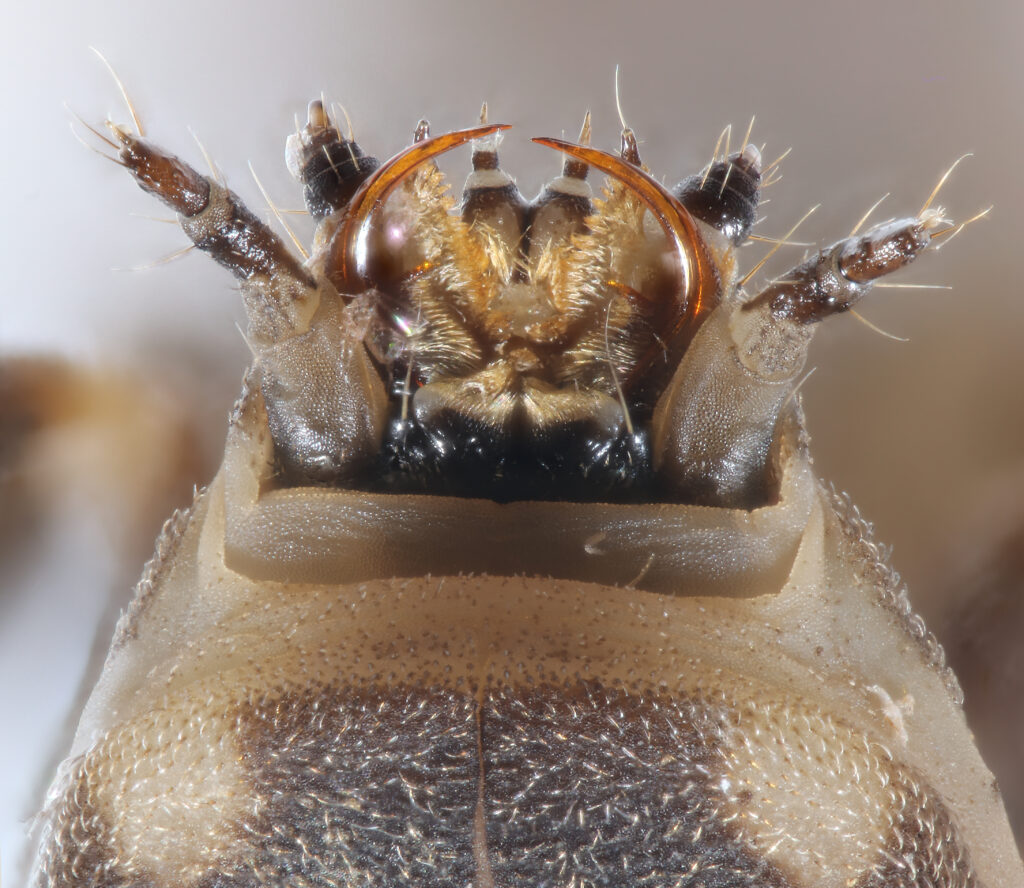Dominik Kusý will study the venoms of predatory larvae of fireflies and click beetles
This year Dominik Kusý, who has received a one-year student grant from Palacký University, will research the venoms of fireflies and predatory click beetle Drilus of the family Elateridae. The aim is to perform the first characterization of toxins produced by the venom glands of larvae in selected species and thus contribute to the understanding of the evolution of venoms in beetles. However, the young scientist does not rule out the possibility that the analyses could reveal new biologically active substances potentially useful in plant protection or medicine.
“The use of venoms while hunting is much more common for insects than one might think. However, our knowledge of the function and composition of venoms used in beetles is incomplete compared to other species. No studies have been carried out, apart from one in the 1950s that postulated the neurotoxic activity of firefly venom. Therefore, I decided to take advantage of a collaboration with a colleague in Eivind Undheim’s laboratory at the University of Oslo, who is working on the evolution of venoms in animals in general. I will transfer the method used by him to Palacký University and apply it to the firefly group,” said the scientist, who works in CATRIN’s Biodiversity and Molecular Evolution research group and is a Ph.D. student at the Faculty of Science.
The common glow-worm (Lampyris noctiluca, native to Central Europe) and the click beetle Drilus of the family Elateridae were ideal candidates for model species. Both of them are predators, can be kept in laboratory conditions and their development cycle is short under optimal conditions.

“The adults of these groups are not venomous per se and in most cases do not take food, but the larvae of these groups are ruthless predators and feed on the liquefied tissues of their prey, much like spiders. These predators will hunt anything that comes their way – fireflies feed mostly on snails and earthworms, their relatives also feed on millipedes many times their size. Both of these groups have independently evolved a venom production by the glands of the oral system to kill their prey,” Kusý explained.
He will use a combination of state-of-the-art genomic and proteomic analysis methodologies to investigate the composition of beetle venom. The information obtained will be used in subsequent studies for comparative genomics of unrelated lineages, allowing a better understanding of the evolution and functioning of venoms in insects. In collaboration with the University of Oslo, the scientist intends to identify and characterise peptides and proteins present in saliva using mass spectrometry.
“So, this is more basic research and a first step towards understanding the evolution of venom in beetles, but it could also be a pathway that leads to applied research and the discovery of new biologically active compounds with applications in plant protection and medicine. The results can also be used for studies investigating the use of larvae as a biological control against snails. If we know the sequence that produces the toxin, we can easily create it in the laboratory and use it against specific pests,” added Kusý.
Palacký University supported the project with approximately CZK 479,000. The expert mentors will be Ladislav Bocák, head of the CATRIN Biodiversity and Molecular Evolution group, and Jan Philip Øyen from the University of Oslo.

